Fox News Autos Test Drive: 2020 Chevrolet Corvette Stingray
The 2020 Corvette Stingray is the first mid-engine version of the all-American sports car. Fox News Autos Editor Gary Gastelu found out if it it has what it takes to compete with the world's best.
The 2020 Chevrolet Corvette Stingray is a rock star car. I don’t mean that figuratively. An actual rock star owns one.

Chevrolet
Kiss frontman Paul Stanley picked up a white Stingray with a red interior and tweeted his love for it, saying he bought American because it's beyond “world class.”
OK, perhaps the fact that he’s buds with General Motors President Mark Reuss influenced his purchase, but he’s driving it, so the endorsement is legit.

Chevrolet
Of course, the 68-year-old singer does fit the classic stereotype of a Corvette buyer: mature with money to burn. Just the type of customer many expected to be alienated by the Corvette’s switch from a front- to mid-engine design. So much for that.
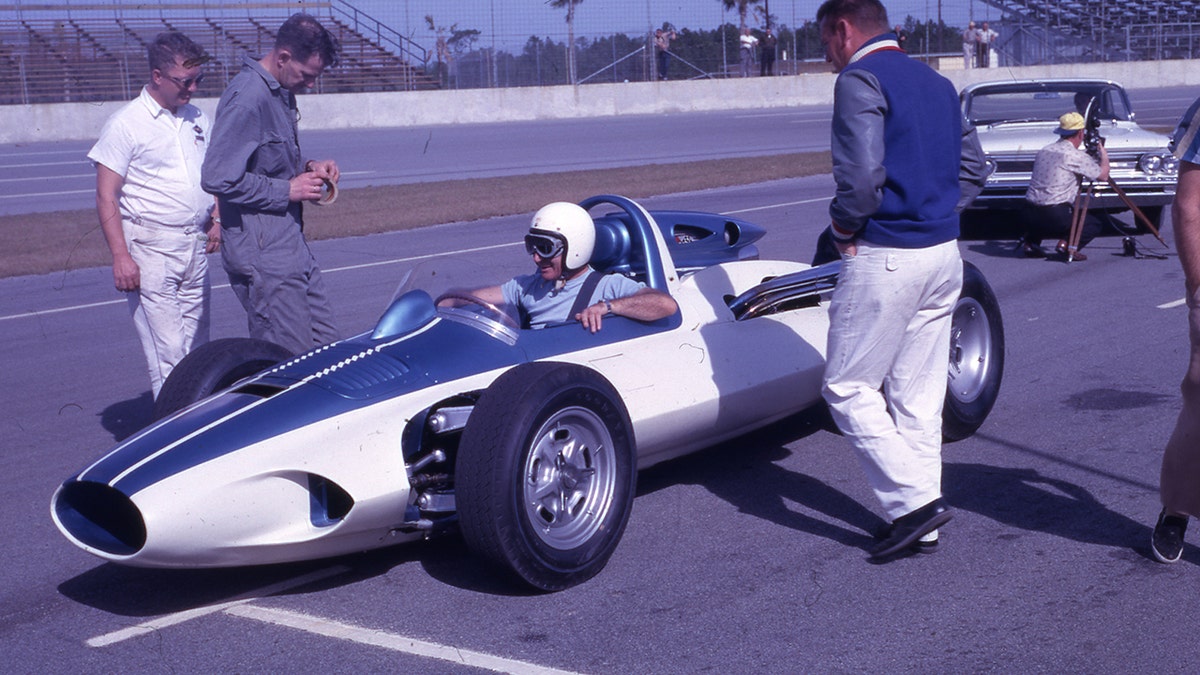
The Chevrolet Experimental Research Vehicle, or CERV I, was revealed in 1960 to explore the possibilities of a mid-engine layout.
The eighth-generation Corvette is the realization of a dream that dates back six decades, when legendary GM engineer Zora Arkus-Duntov started building mid-engine prototypes because the layout offered potentially better performance than a front-engine design. It’s an idea that race and exotic car builders took and ran with while Chevy stuck to tradition.
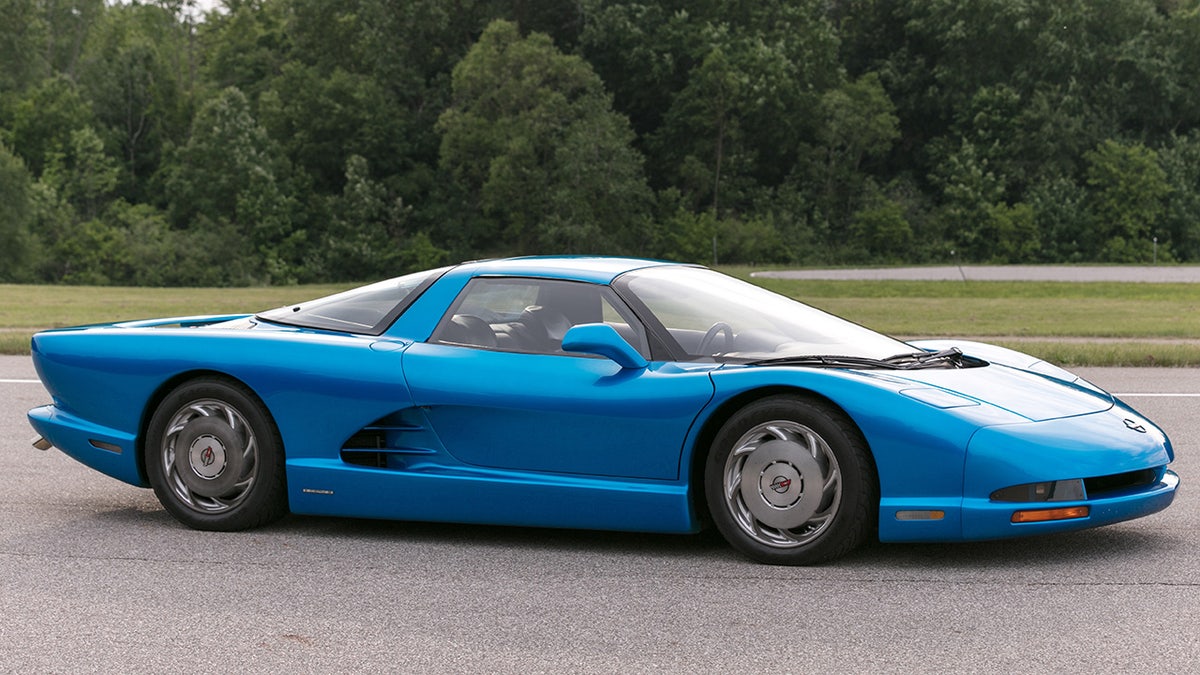
The 1990 CERV III never made it into production but could be driven in the video game "Test Drive III: The Passion."
Arkus-Duntov’s team and its predecessors developed over the years, but the executives at HQ just couldn’t be convinced. Current Corvette Executive Chief Engineer Tadge Juechter told Fox News Autos that a mid-engine Corvette was rejected as recently as 2006 simply because of inertia.
“There were people when we first started talking about this that were almost entirely naysayers. Virtually nobody in leadership thought it was a good idea because we were building and selling Corvettes to an enthusiastic fan base, or selling them in volumes to make a profit,” he said.
Cooler heads prevailed as the seventh-generation Corvette was completed for 2014, and Juchter and his team were off to the races, even though none of them had ever worked on a mid-engine car before. You’d never know it.

Chevrolet
The new Stingray is a radical departure from previous editions, but it keeps many classic Corvette traits intact, including a relatively low starting price of $59,995. Some of the bodywork is technically fiberglass, but in various modern composite forms. Jucther calls it a “mosaic” of materials, which also applies to a chassis made from aluminum, steel, magnesium and a touch of carbon fiber.

(Fox News Autos)
Then there’s the rear trunk, which you don’t often find in a mid-engine car. It’s big enough to fit the lightweight, removable roof panel or two golf bags, because the latter capability may be even more entwined with the Corvette’s image than the location of its motor. Since that’s in the middle of the car, there’s also room for a sizeable front “frunk.”

Chevrolet
The Stingray’s interior is equally practical, as far as low-slung sports cars are concerned, with enough legroom for the 6-foot-tall Stanley to fit comfortably, perhaps even while he’s wearing his sky-high stage boots. It’s well-trimmed and designed with a lot of interesting details, like panels hovering over the top of the dash, and is more appealing than the cabins in some far more expensive cars, including the $450,000 Ford GT’s stark accommodations.
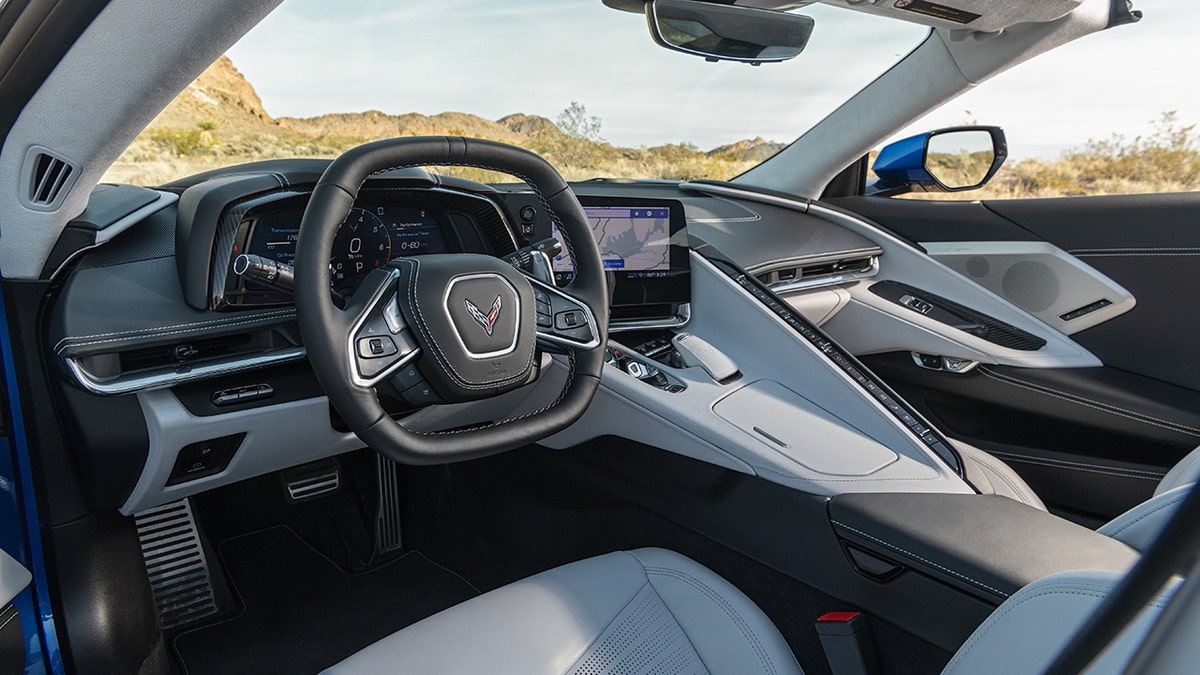
Chevrolet
Its one controversial element is a long row of climate control buttons on a buttress separating driver and passenger that can be awkward to use. However, the tablet-style infotainment screen, which is a close reach, has redundant on-screen controls that you can operate with your thumb while you steady your hand on the bezel.
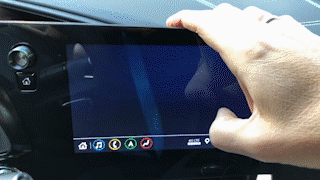
A second display serves as the instrument cluster, which is configurable and framed by a squared-off steering wheel that stays below your line of sight as you look over the low dashboard and through the absolutely panoramic windshield. The over-the-shoulder views aren’t anywhere near as good, but the rearview mirror is equipped with a video feed, and if you turn your head all the way around you can see the engine behind the window. It’s a glorious sight.
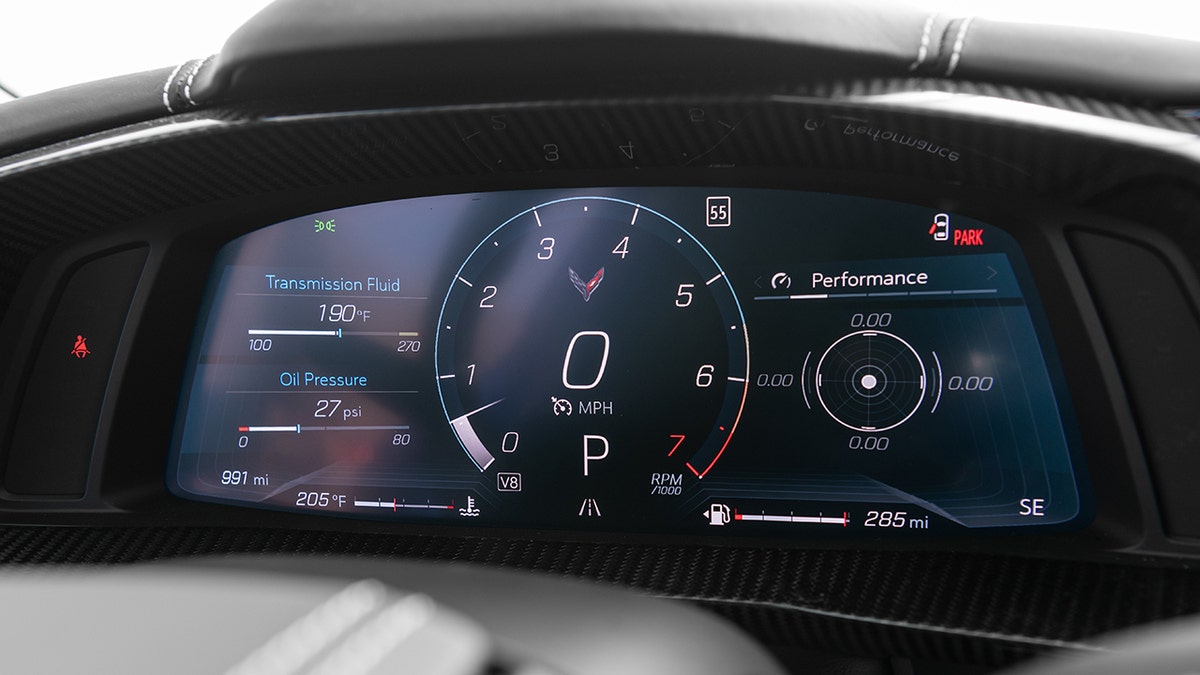
Chevrolet
The Stingray is powered by GM’s latest 6.2-liter pushrod V8. Yes, pushrods. Just like the Chevy Silverado. Except this one is presented in all of its mechanical glory with parts designed to be displayed under the humongous hood’s glass panel.
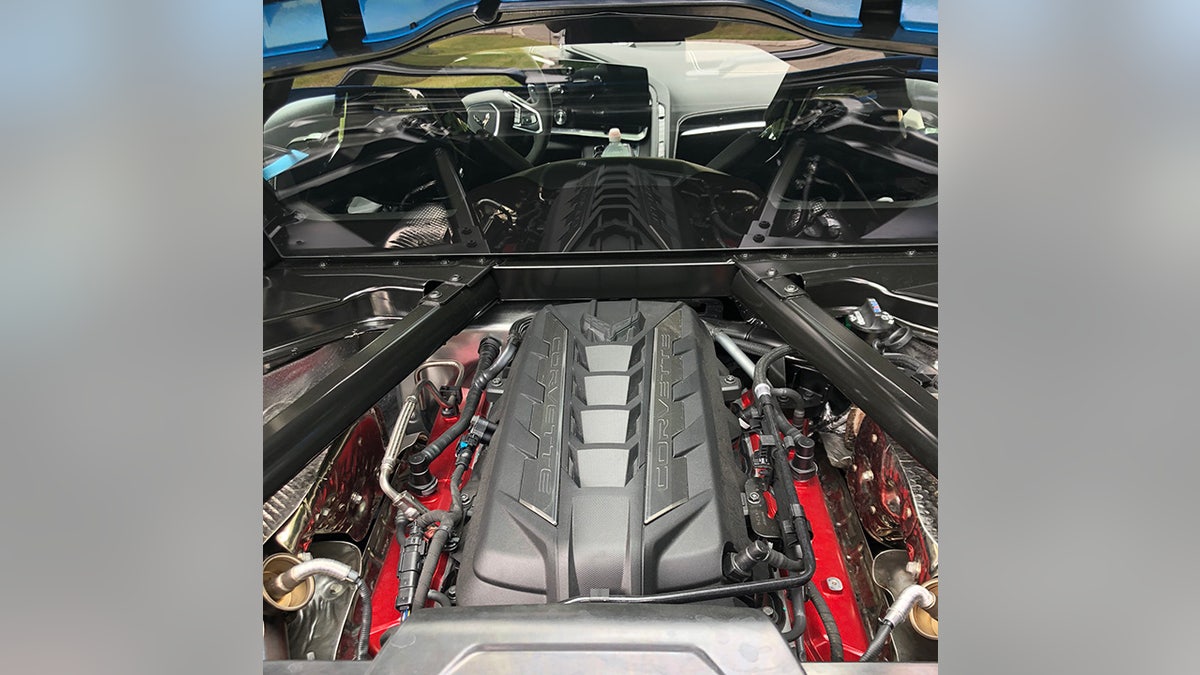
(Fox News Autos)
The V8 gains 35 horsepower over the outgoing version for 490 hp and has 465 lb-ft of torque to go with it. A toggle and pushbutton-controlled 8-speed dual-clutch automatic transmission is standard and the only type available, but it does come with paddles behind the wheel that let you shift gears manually. If you pull them both at the same time it instantly switches to neutral so you can rev the engine for your audience. There will always be one, because the Stingray’s chiseled body has all the presence and drawing power of a million-dollar exotic.

(Fox News Autos)
The $5,000 Z51 performance package on my test car tweaks the engine to 495 hp and 470 lb-ft and adds extra cooling for the engine and transmission, a track-oriented suspension tune, downforce-producing rear wing and body extensions, larger Brembo brakes, a limited-slip rear differential and a set of sticky summer tires.
2020 CORVETTE STINGRAY GETS 'LAMBO DOORS'
The car was also equipped with GM’s Magnetic Ride Control adjustable shocks, which are worth it on any model they are available on, from trucks to sedans, even for the $1,895 they cost here. Just as valuable, but for a very different reason, is the optional $1,495 hydraulic system that raises the Stingray’s pointy nose 2 inches to avoid scrapes and can be programmed to do that automatically as you approach up to 1,000 marked locations where you often drive.
Although billiard table-smooth roads are preferred, a Stingray configured like this and set to Tour mode can be used as a daily driver on the most wretched pavement, even with its ridiculously low-profile tires and staggered 19- and 20-inch wheels. The car just glides over them with no shakes, rattles, rolls or flexes. But the Stingray can flex when you want it to.

Chevrolet
Drop the hammer and 60 mph arrives in about 2.9 seconds without any wheel spin, according to Chevrolet. That's thanks in part to the 40/60 weight distribution provided by the mid-engine design and the Stingray’s excellent traction management system. It's nearly as quick as the old front-engine 755 hp Corvette ZR1, which was a big part of the reason Chevy made the switch.
FOX NEWS AUTOS TEST DRIVE: 2021 CHEVROLET TAHOE
The other becomes apparent when the road gets curvy. Moving the weight between the wheels improves steering response and helps neutralize the handling, which is like a slot car’s up to the limit. I didn’t get the opportunity to find out what happens when you go past it, but I can tell you that there is a long way to go to get there.
The Stingray plays good music while you do all this. Jucther said refining the engine sound with it located right behind your ear was one of the tougher challenges posed by the layout.

(Fox News Autos)
“The nice thing about a front-engine car is that you’ve got induction noise in the front and the exhaust pipe in the back, so you’ve got a kind of stereo,” he said. All I can say is: expert-level challenge complete.
The transmission can be a little lazy to shift in Tour but rips through the gears and always picks the right one in the Sport and Track modes, which also adjust the throttle response and firm up the suspension and steering feel. You can customize everything to your liking and engage your settings with a Z-mode button on the steering wheel if you prefer.
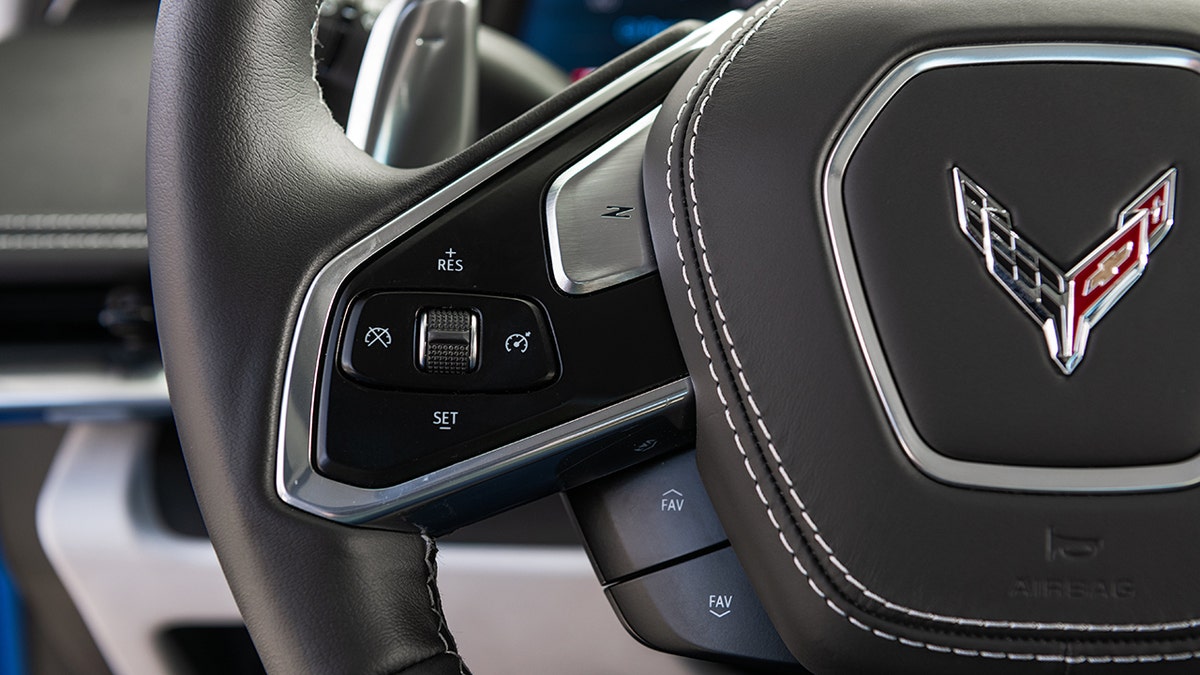
Chevrolet
The reimagined Stingray now nearly exists in a class by itself. The cars closest to it on price and execution are the mid-engine Porsche 718 and the rear-engine Porsche 911, but neither are quite the same thing. As far as six-figure, mid-engine cars like the Audi R8, Acura NSX and Lamborghini Huracan are concerned, despite their power advantage and all-wheel-drive, I’d be hard-pressed to give you a truly good reason to spend triple your money on one.
CLICK HERE TO GET THE FOX NEWS APP
Those arguments won’t even hold much longer against the Corvette, because you know there are much more powerful models on the way. Juechter won’t even hint at how much, but word on the street is that 800-1,000 hp isn’t out of the question, possibly with an electric boost. Based on the Stingray’s performance, the platform has plenty of room to grow.
But regardless of what’s to come, the car on sale today makes one thing perfectly clear:
This Detroit city automaker still knows how to rock.
----------
2020 Chevrolet Corvette Stingray
Type: 2-passenger, 2-door, rear-wheel-drive coupe
Base price: $59,995
As tested: $80,315
Engine: 6.2-liter V8
Power: 495 hp, 465 lb-ft
Transmission: 8-speed dual-clutch automatic
MPG: 15 city/27 hwy




















